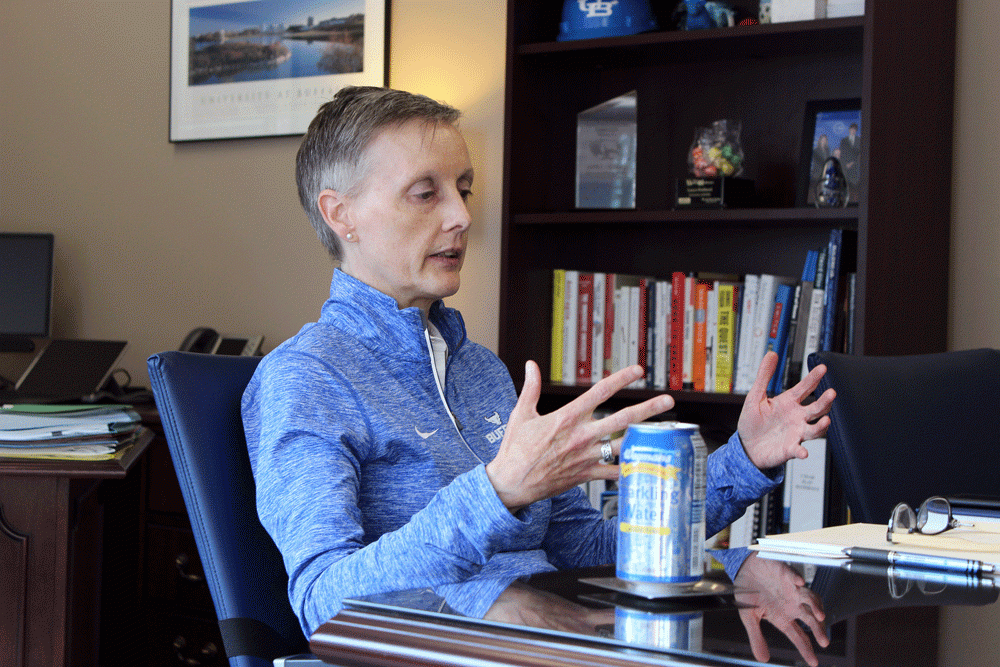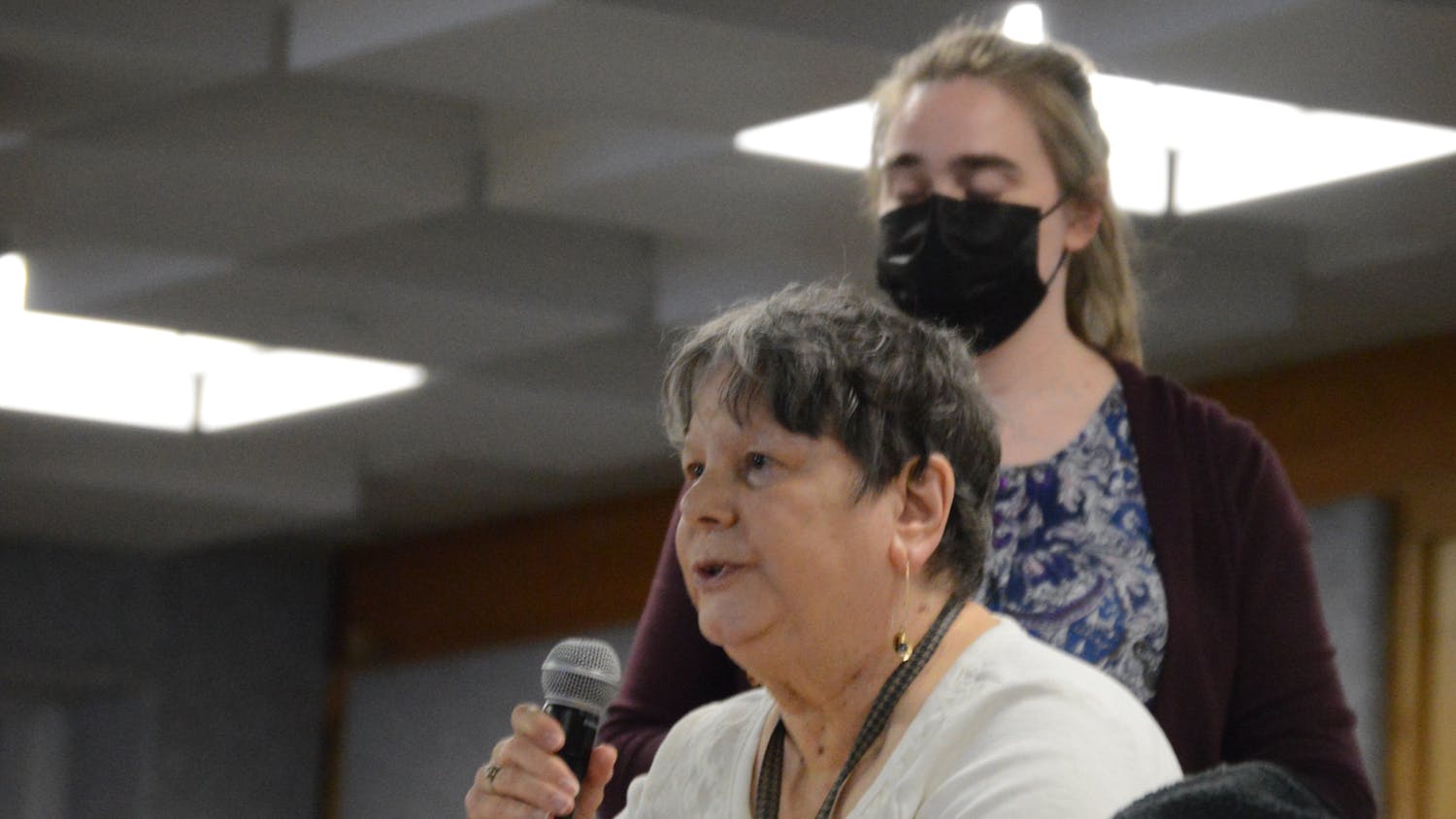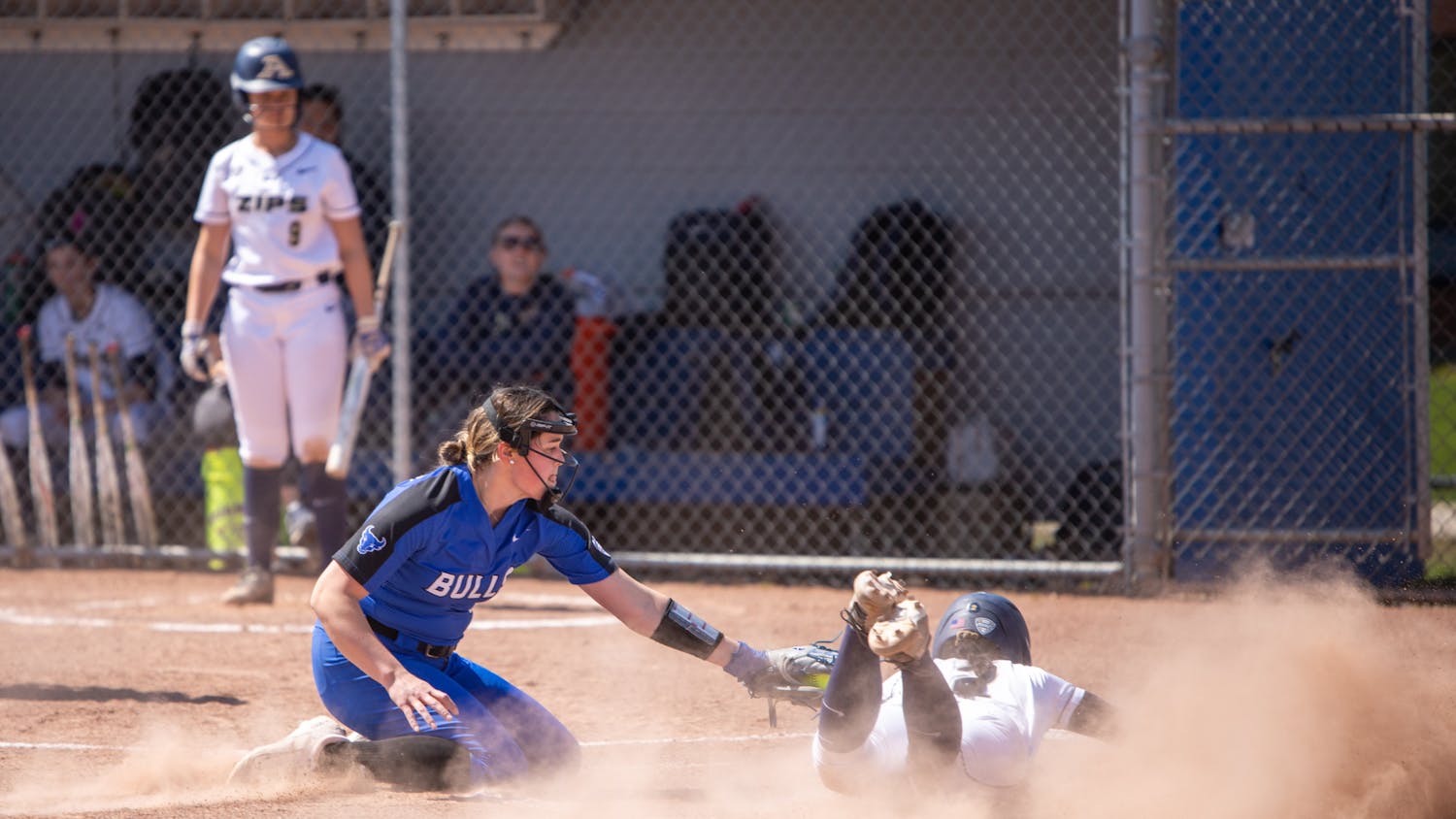After former UB Vice President Dennis Black and former Campus Living Director Andrea Costantino pleaded guilty to stealing thousands in state funds on Sept. 7, students have expressed concern and confusion about UB’s finances.
“Even before the Dennis Black situation, I had been concerned about UB’s finances. The closest they seem to come to transparency is a categorical breakdown of [fees],” said Mike Brown, UB Council Student Representative and Student Association Assembly Speaker. “UB should take national leadership as a public university by following the examples of local, state and federal government who have all adopted open data policies to promote both efficiency and transparency.”
Senior political science major and Black Student Union President Malcolm Gray also expressed concerns about UB’s lack of transparency.
“UB’s financial transparency needs to extend beyond just a general ledger. Officials need to involve themselves in the lives of students on a regular basis and there needs to be a record of every transaction that university officials make and request,” said Malcom Gray, a senior political science major.
The Spectrum sat down with UB’s Vice President for Finance and Administration, Laura Hubbard, who broke down how money works at UB. She discussed how private corporations affiliated with the university operate and explained where UB gets its money and where it goes.
Hubbard also commented on Black and Costantino’s crimes, how they occurred and how stricter controls have been put in place to ensure a similar crime does not happen again in the future.
Auxiliary enterprises
The Faculty Student Association, a private entity affiliated with UB, is the organization Black used to funnel hundreds of thousands of dollars into a private bank account. He used to the money to finance personal expenditures such as Yankees tickets and his son’s bachelor party.
Auxiliary enterprises handle revenue that is generated through sales or relationships with individual people, according to Hubbard.
These enterprises typically include: student housing, campus dining and bookstores, according to Hubbard.
Campus Dining and Shops and the University Bookstore fall under the Faculty Student Association’s umbrella.
“Virtually every college and university in the country— public and private—has auxiliary enterprises,” Hubbard said. “Most of these auxiliary enterprises are a part of the universities themselves, meaning the universities have direct access to the funds and can see what they are being spent on.”
However, some universities outsource their auxiliary enterprises to private corporations, which is the case at UB and SUNY schools in general, Hubbard said. She added that the business was outsourced because “it doesn’t work well in the state agency business department.”
Auxiliary enterprises do not “exist just to exist,” according to Hubbard.
“[Auxiliary enterprises] exist because of the university and to benefit the university. But it is a separate corporation. The governing board is a fiduciary board and what that means is they have a legal obligation to ensure that they are doing what is best for the corporation,” Hubbard said.
Prior to uncovering Black’s crimes, Hubbard, President Satish Tripathi and Provost Charles Zukoski set up “special sessions” on auxiliaries in order to provide “better insight” into how auxiliaries were financed and operating.
“In the conversations we have around student fees and tuition and room and dining rates, we want a better understanding of what the total cost increases are to the students. We wanted a better linkage between those conversations,” Hubbard said.
These sessions ultimately led to President Tripathi noticing he was not getting travel reimbursement requests from Black. Hubbard then looked into the situation, which prompted the university to audit the Faculty Student Association, focusing on any reimbursements it was paying to university employees.
The audit uncovered Black’s crimes.
“So, what happened was [that we noticed] there were funds that were supposed to be paid to the university—specifically to Student Life—for costs that they bear to support campus dining and shops and the auxiliary. But instead of transferring the money to the university, [Black] put it in a special bank account that stayed over at FSA and then certain people had access to those funds and utilized them,” Hubbard said.
Costantino’s crimes were also revealed through the audit. The audit looked at all the financial activity at FSA and noticed some of those funds were used by Costantino to make personal purchases.
“So that’s how it came about—we ended up auditing that entire bank account,” Hubbard said. “It’s disappointing what happened. Unfortunate, obviously. We’ve done a lot of work—you know this is a problem that the university discovered… so we’re focused on understanding how it occurred and making sure that we, to the extent possible, can prevent the same circumstances from happening in the future,” Hubbard said of Black’s theft.
SUNY auxiliary cooperation guidelines were updated in June 2016—the same month Black stepped down, according to Hubbard.
“The anonymous [ethics report] hotline, the internal control policies are now covered in new employee orientation just so people are aware of them so all the measures an important part of creating a stronger control environment than we’ve had,” Hubbard said.
The new guidelines also change how auxiliaries are governed. For example, the SUNY guidelines require that a third to half of the auxiliary board be comprised of students. And the law now requires auxiliary enterprises to have independent directors who don’t have business connections with the university or its auxiliaries.
“So they’re business experts and community people that have business expertise and they also constitute the audit committee of FSA. FSA also didn’t have an audit committee previously – now they have one. And it’s made up of these independent experts—so that’s a change,” Hubbard said.
The updated SUNY guidelines now call for seven administrators—previously there were only three, including Black, and they were all from Student Life. Hubbard said the university sought to “diversify” the administrators by including people from South Campus, Academic Affairs as well as businesspeople. The University Comptroller was also added to the board, which means the university now has some direct insight into FSA’s finances— which they did not have before.
“So those were changes made both to make the FSA board more robust—and we did this in cooperation with FSA—but also to provide stronger controls and management over the business operations there,” Hubbard said.
Tuition and fees
Students have also expressed concern about how the university handles their money. In-state students pay $6,670 in tuition each year. Students also pay a $209.50 student activity fee yearly, which funds the Fall and Spring Fests, Homecoming Carnival and the Fall and Spring Galas, off-campus activities such as tickets to Sabres games and funding for over 150 student-run clubs and organizations.
Students also pay two “broad-based fees”—the Comprehensive Fee and Academic Excellence and Success fee— which are $2,573.50 and $375, respectively. The proposed Academic Excellence and Success fee for 2017-18 is $475.
Broad-based fees are “charged to all enrolled students to finance discrete activities that benefit the student body, excluding those activities that are part of the core instructional program,” according to Student Accounts.
The comprehensive fee was implemented in 1998 and it’s a compilation of all SUNY and campus required fees. It includes technology, athletics, transportation, health, campus life, a transcript fee and funding for University Police.
The Academic Excellence and Success Fee is a “strategic investment plan to invest in and expand academics and research, need-based aid, faculty and researchers,” according to Student Accounts. The fee, established by Gov. Andrew Cuomo in 2011, goes toward:
o The Finish in Four graduation program
o Center for Excellence in Writing
o Center for Entrepreneurial Research
o Extended campus library hours
o Updated technology in classrooms and cybraries
o Formation of the biomedical informatics and material sciences and engineering departments
o Institute for Strategic Enhancement Establishment of Institutional Diversity, an organization that “funds and educational opportunity for underrepresented and disadvantaged students in post-baccalaureate programs across the disciplinary spectrum,”according to Student Life
o UB Energy Diversification Initiative
o Formation of “A Human Capital Agenda for Educational and Economic Development,” an MA program in economics and educational policy
o Built Environment, Health Behavior, and Health Outcomes Initiative, which sponsored research, the launch of an interdisciplinary dual degree in planning and public health
o Center for Leadership and Organizational Effectiveness
o Formation of the Institute for Sustainable Transportation and Logistics (ISTL)
o Establishment of Computational and Data-Enabled Science and Engineering
o Joining Forces: UB Partnership for Excellence in Veteran Care, a collaboration between the UB Master of Social Work students and Doctor of Nursing Practice students focusing on training students interested in working with veterans and military families.
Students are given the opportunity to voice their opinions on the academic excellence fee via the UB Hub, a yearly survey, Facebook and via student representatives, according to Student Accounts. The fee was introduced to student leaders at a conference in 2011.
“The input from that meeting was that student leaders actively engaged in the discussion were supportive of the UB 2020 approach and encouraged continual, active dialogue with students in constructing future plans for tuition and fee revenue use,” Student Accounts said in a statement on their website.
Operating expenses and revenues
UB generates revenue through state tax support, tuition, fees, residence hall and apartments operations, endowment income, unrestricted gifts administered in the UB Foundation, faculty and administrative cost recovery and other income administered in the Research Foundation for SUNY and agency revenue administered in Campus Dining & Shops, according to UB’s 2015-16 Overview of Financial Activities.
UB took in $739 million in 2015-16. This money goes toward instruction, departmental research, academic support services, student services, institutional support, operation and maintenance of plant, scholarship and fellowships, public service expenses, hospitals, clinics and intercollegiate athletics.
Hubbard feels a sense of responsibility to the UB community. She believes her chief
responsibility is stewardship.
“If you look up the definition of stewardship it means we’re managing resources that don’t belong to us,” Hubbard said. “To me, that’s an important responsibility and it involves everybody at the university because we all in some way are managing resources that are university resources.”
Maddy Fowler is an assistant features editor and can be reached at maddy.fowler@ubspectrum.com





